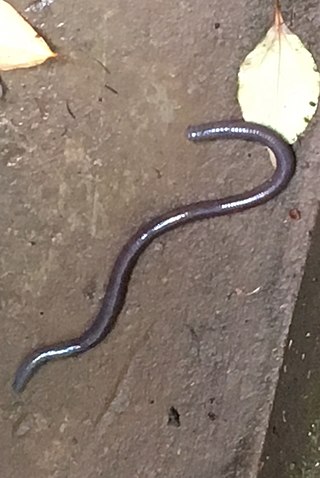
Moles are small mammals adapted to a subterranean lifestyle. They have cylindrical bodies, velvety fur, very small, inconspicuous eyes and ears, reduced hindlimbs, and short, powerful forelimbs with large paws adapted for digging.

The little owl, also known as the owl of Athena or owl of Minerva, is a bird that inhabits much of the temperate and warmer parts of Europe, the Palearctic east to Korea, and North Africa. It was introduced into Britain at the end of the 19th century and into the South Island of New Zealand in the early 20th century.

The family Talpidae includes the moles who are small insectivorous mammals of the order Eulipotyphla. Talpids are all digging animals to various degrees: moles are completely subterranean animals; shrew moles and shrew-like moles somewhat less so; and desmans, while basically aquatic, excavate dry sleeping chambers; whilst the quite unique star-nosed mole is equally adept in the water and underground. Talpids are found across the Northern Hemisphere of Eurasia and North America, and range as far south as the montane regions of tropical Southeast Asia.

Oligochaeta is a subclass of animals in the phylum Annelida, which is made up of many types of aquatic and terrestrial worms, including all of the various earthworms. Specifically, oligochaetes comprise the terrestrial megadrile earthworms, and freshwater or semiterrestrial microdrile forms, including the tubificids, pot worms and ice worms (Enchytraeidae), blackworms (Lumbriculidae) and several interstitial marine worms.

Megascolecidae is a taxonomic family of earthworms native to Madagascar, Australia, New Zealand, Southeast Asia, and North America. All species of the Megascolecidae belong to the Clitellata class. The Megascolecidae comprise a large family of earthworms and they can grow up to 2 meters in length. The intercontinental distribution of Megascolecidae species favours the continental drift theory.

The hairy-tailed mole, also known as Brewer's mole, is a medium-sized North American mole. It is the only member of the genus Parascalops. The species epithet breweri refers to Thomas Mayo Brewer, an American naturalist.

Owston's palm civet is a civet native to Vietnam, Laos and southern China. It is listed as Endangered by IUCN because of an ongoing population decline, estimated to be more than 50% over the last three generations, inferred from over-exploitation, habitat destruction and degradation.

The Chinese ferret-badger, also known as the small-toothed ferret-badger is a member of the Mustelidae, and widely distributed in Southeast Asia. It is listed as Least Concern on the IUCN Red List and considered tolerant of modified habitat.

The Ussuri shrew, also known as the giant shrew, is a species of shrew found in Northeast Asia. An adult Ussuri shrew has a total length including the tail of 137 to 170 mm. It is found in valleys and on the forested slopes of mountains in the Korean Peninsula, northeastern China, and the Russian Far East. It is rarely observed, and its ecology is largely unknown.

The Taiwan partridge or Taiwan hill partridge is a species of bird in the family Phasianidae. It is found only in Taiwan, and its natural habitat is broadleaf forests. It is threatened by habitat loss, but at present is categorised by the International Union for Conservation of Nature (IUCN) as being of least concern.

Pheretima is a genus of earthworms found mostly in New Guinea and parts of Southeast Asia.

Manchurochelys is an extinct genus of turtle. It existed during the early Cretaceous of what is now northeast China. It has been found in the Jianshangou Bed of West Liaoning's Yixian Formation. However, it is a rarely found fossil.

An earthworm is a soil-dwelling terrestrial invertebrate that belongs to the phylum Annelida. The term is the common name for the largest members of the class Oligochaeta. In classical systems, they were in the order of Opisthopora since the male pores opened posterior to the female pores, although the internal male segments are anterior to the female. Theoretical cladistic studies have placed them in the suborder Lumbricina of the order Haplotaxida, but this may change. Other slang names for earthworms include "dew-worm", "rainworm", "nightcrawler", and "angleworm". Larger terrestrial earthworms are also called megadriles as opposed to the microdriles in the semiaquatic families Tubificidae, Lumbricidae and Enchytraeidae. The megadriles are characterized by a distinct clitellum and a vascular system with true capillaries.
Microchaetus rappi, the African giant earthworm, is a large earthworm in the Microchaetidae family, the largest of the segmented worms. It averages about 1.4 meters in length, but can reach a length of as much as 6.7 meters and can weigh over 1.5 kilograms.

Pseudoxenodontinae is a small subfamily of colubroid snakes, sometimes referred to as a family (Pseudoxenodontidae). They are found in southern and southeastern Asia, from northeast India to southern China and south into Indonesia as far east as Wallace's Line. There are 10 species in 2 genera. Most are very poorly known, such that Pseudoxenodontinae is one of the most poorly known groups of snakes.

Drawida polydiverticulata is a species of earthworm from family Moniligastridae found from shola grasslands of the Munnar region in Kerala.

Drawida thomasi is a species of earthworm found from Kakkadampoyil in Kerala. It belongs to the primitive family, Moniligastridae. D. thomasi is approximately 5 cm long and bluish in colour.
Moniligastridae is a family of earthworms native to South and Eastern Asia, containing around 200 species and five genera.
Opisthopora is an order of mostly terrestrial worms.
Drawida is a genus of annelids belonging to the family Moniligastridae.















